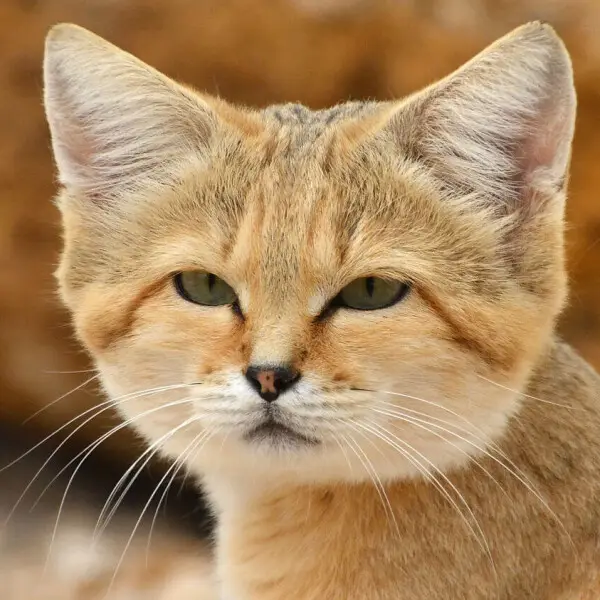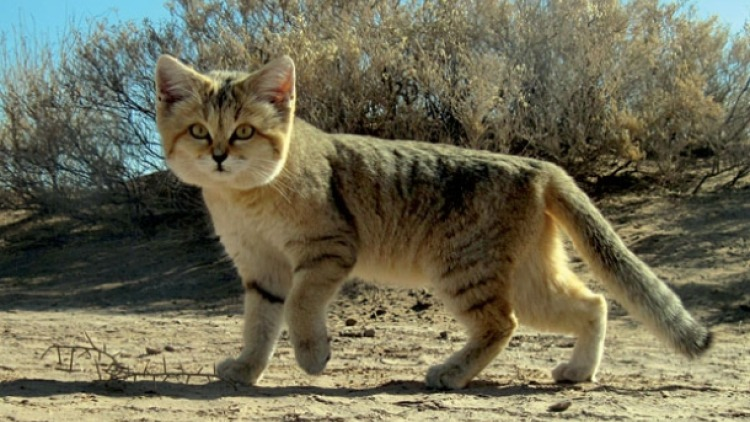The appearance of the sand cat in Syria: Learn about the story of its name and origin

The Athar Press website, which is close to the Syrian regime, said that some websites and social media pages circulated a picture of a cat said to be a sand cat that was spotted in the Homs desert.
The website stated, quoting wildlife expert Ahmed Idak, that the sand cat is not strange, but its appearance has been documented in Syria since the 1980s, and it lives in the dry and semi-arid areas of the Syrian desert.
Sand cat
The sand cat (Felis margarita), also known as the "dune cat", is a species of small wild cat that lives in the deserts of North Africa, Southwest Asia, and Central Asia. The sand cat is well adapted to live in arid environments with sandy terrain, hence its name.
Here are some of the main characteristics and features of the sand cat:
Size: Sand cats are relatively small, with a body length of about 18 to 22 inches (45 to 56 cm), a shoulder height of about 10 inches (25 cm), and a tail length of about 11 inches (28 cm).
Appearance: The sand cat has a strong, stocky build with a short, dense coat of pale sandy or light gray fur, which helps it blend into its desert surroundings.
Behavior: Sand cats are primarily nocturnal, which means they are most active during the night. They are a solitary animal and are usually shy and elusive.

Habitat: As their name suggests, sand cats live in sandy deserts and arid areas, and are often found in areas with sparse vegetation and sand dunes, such as the Sahara, the Arabian Desert, and other desert areas in parts of Asia and the Middle East.
Diet: These cats are carnivorous and feed mainly on small mammals, birds, and insects. They are known for their hunting skill and their adaptation to hunting agile desert rodents such as gerbils and small birds.
The sand cat is classified as “near threatened” by the International Union for Conservation of Nature (IUCN), and the elusive nature of these cats makes it difficult for researchers to collect comprehensive data on their populations and precise conservation status.
Due to their nocturnal and elusive behavior, sand cats are relatively rare to spot in the wild, and they are not commonly kept in captivity, making them a difficult species to study and preserve.
Source: websites

